Puma helicopters deployed to Afghanistan have continued to operate ‘despite the challenges the aircrew face from the Afghan winter, snow and mountainous terrain’, say the Royal Air Force.
Squadron Leader Max Bond, Officer Commanding the UK’s Theatre Aviation Detachment, said:
“Operating the aircraft is always a challenge because of Kabul’s altitude and congested airspace, but this is further compounded during the winter months by degraded visibility, sub-zero temperatures and occasional heavy snow fall.
Despite this we have been able to maintain our core activities and have recently conducted training with the 1st Battalion the Royal Gurkha Rifles to make sure we are ready and able to provide an airborne Quick Reaction Force for the NATO mission if required.”
Air Commodore Dean Andrew, Deputy Commander NATO Air Component – Afghanistan, said:
“The Op TORAL Puma detachment is the movement asset of choice in Kabul for NATO. The agility and capability of the crews and aircraft support the NATO mission daily, in all conditions.“
The Pumas are in Afghanistan to provide support to the NATO forces stationed there, conducting ongoing training and advisor missions with Afghan Security Forces.



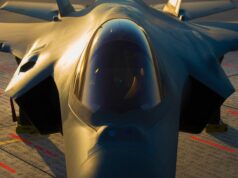
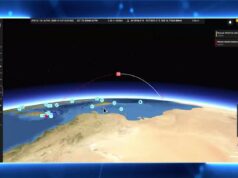
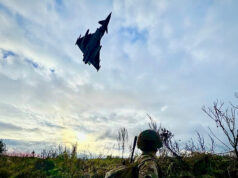
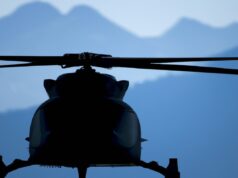
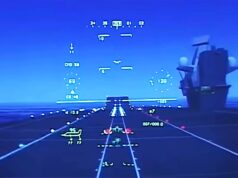
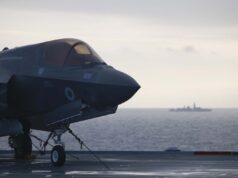

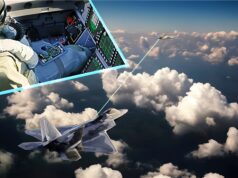
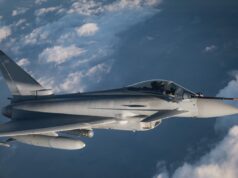
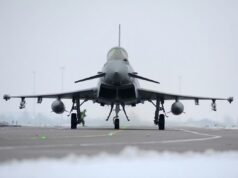

The old girl is still going! About time a replacement was looked at. I believe Gordon Brown’s government was looking at the Blackhawk! Maybe it’s time to bring the AW149 into consideration…manufactured in this country. But who should get it, the Army or the RAF?
Should be an Army asset as should be the Chinooks and F35B’s FAA!
It would seem logical, but there is a lot of politics going on here!
The anti-RAF sentiment is almost as old as the RAF itself. The biggest sticking point is that the RAF’s focus seems to always be on their primary tasks as opposed to combined arms operations, they always seem to be trying to get one up on the other services. Historical cases include the CVA-01 vs TSR-2 debacle, killing off Harrier in favour of retaining Tornado despite the RN still having two carriers in need of aircraft, etc.
I’m somewhat ambivalent on the topic. My personal view is that joint forces (the Harrier force, the Lightning force, Joint Helicopter Command) are fairly nonsensical and simply duplicate efforts. Naval aviation should be the purview of the Fleet Air Arm, land based aircraft are the RAF’s domain. Far more logical.
Interesting…I have always been a bit bemused by the fact that the Army can operate filthy great attack helicopters, but can’t fly it’s own troops around the battlefield!
It’s a mutual arrangement, MoD departments attempting to cripple each other to get one over them. Don’t forget the Navy using the Buccaneer to kill the TSR2
The interservice rivalry is ultimately costing the services. Using the “make sure we get the most budget” method instead of the cheapest results in less cash for everybody. The best example is the RAF using A330 AAR and Typhoon with Brimstone against ISIS fighters instead of Predator with LMM. Either we ditch two service HQs and the joint commands and operate together or we don’t. If it’s the latter then for aircraft it’s a simple case of if it supports the Navy it’s FAA and if it supports the Army it’s AAC, if neither it’s RAF. So this:
RAF = A330, Typhoon, Hawk, Predator
FAA = F35b, Merlin, Wildcat
AAC = C17, H130, Chinook, Apache, Lynx
I most protest tims comment. In while i dont necessary disagree with the transfer of the helicopter fleet, i do strongly disagree with the transfer of straigic airlifters such as C17 and C130. Simply because they support all three services and no other army aviation unit, even in America have strategic airlif capacity. Its all in the airforce.
@Harry Bulpit
The US has the strength of depth to justify the 3 services, the UK no longer does.
They need to consolidate things as much as possible, to avoid the 3 arms political battles, which benefits no one.
We need to split up the assets into categories (not just aircraft, but all assets) and then have a strategy for that category (let’s say rotary lift). Which service gets the assets based on the delivery of the strategy should be the last part of the decision not the first.
No, the Navy did not “kill” the TSR-2 – that was ultimately a political decision. The plane was plagued with developmental problems, not least of which was a major one with exploding engines and was seriously over budget.
There may also have been US pressure to cancel the plane in exchange for US agreement to back a necessary, and large, IMF loan to the UK
The US hope was that we’d then have to buy the F1-11 but this ended up even more expensive than the TSR-2 and so never happened
Harry. I debated the C130 and C17 myself and they could go either way. To Steve’s point, if the aircraft delivers stuff from a point on the ground to another point on the ground it’s not really Air Superiority or Deep Strike is it? However for pilot and crew training it may be better to have them with those who fly the A330.
Is there only 25 in service these days? They are great old girls, and could go on for a few more years yet, I love these helicopters. We never really hear about them and some folk don’t even know we have them in service lol, can they fly from our frigates and the new carriers? And have they ever made a early air warning or sub hunting mode? Surely they are far cheaper than Merlins.
23 in service, 27 total.
They have operated from Ocean in the past
I must add, I’m pretty sure at least one occasion was during the Olympics – several articles inferred that she received the facilities to support puma operations for the duration of the games.
She was mored in the Thames, so favourable conditions!
I’m not too sure of the pumas that were flown out after Irma ever operated from her, or at least flew out to get supplies/fuel replenishment.
Can’t comment on whether they’re capable of operating from RN ships, but I’d counsel caution: They’re very unpopular in the oil and gas industry, and for good reason. There is a recognised fault in the main driveshaft, in that it is susceptible to stress corrosion cracking in cold, maritime environments. This leads to catastrophic failures, because if the driveshaft goes then you’re pretty much done. Eurocopter have identified the issue, and they’re working on a fix, but for the time being have just recommended a stricter maintenance schedule. Hence why they’re unpopular for the North Sea oil and gas industry, and why they may not be the best bet for operating from a T23 in the GIUK gap…
The RAF Puma cannot be used on RN ships, unless the sea conditions are like glass. This is because they are very top heavy and have a narrow undercarriage. The French got round this by modifying the rear undercarriage so its sits lower and is more spaced out, but is still limited compared to a Wildcat, Merlin, NH90.
The engines are quite old and do not use a spragg clutch, but rely on a sacrificial drive shaft. The shaft is supposed to shear when the engine loses power so the rotor and gearbox doesn’t drive the engine when auto-rotating. This has also been a contributory factor to a number of Puma/Super Puma crashes.
There is still an Army/RAF agreement which determines which service gets the helicopter and its judged by weight. Basically anything below 3500Kg is Army anything above is RAF. The Apache nearly went to the RAF for this reason, except the RAF didn’t want it – flown by Sgts don’t you know, that will never do….
The Puma 2 conversion was done on the cheap through Eurocopter in Romania. Every aircraft had to spend a minimum of 6 months having faults fixed when the arrived back in the UK.
Interesting info…but was it worth doing…should we have gone for a more modern platform…if so, which one?
The RAF don’t have Merlins any more
Phil C…I was flying a kite mate…wanted to see the arguments for RAF vs Army ownership. Always viewed the Puma as a medium/medium helicopter and the Merlin as a heavy/medium helicopter….something like the AW149 would be a more like for like chopper!
No, purely land based, not marinised. Would cost an awful lot to add picket points, folding tail and head rotor and replace various manganese items with alternatives. should be left with the RAF.
Not much point making it sea-worthy. Too long in the tooth, small numbers and the Merlin can do everything the Puma can do and much, much more!
The RAF don’t have Merlins any more
Besides, the Merlin is useless at altitude, it’d be a miracle if it could lift a Bergen, never mind troops.
If we were willing to buy 2nd hand, there are quite a few ex oil industry EC225 Caracal (a bigger, newer Puma), going cheap.
Yes John…with detachable rotors!
And half a gear box missing! Didn’t those sadly kill oil workers a few times off Scotland!
I do like what they done with the British millitary puma upgrades, they tripled the distance they could fly and doubled the payload it could carry. But they did want 30 of them but cut them to 22 then something totally amazing happened! they actually increased the number to 24! Even though these are 1970s era aircraft they will be fine for a few years yet hopefully after those upgrades. I’m sure we did originally order 44 pumas, then we had to buy 6 old pumas from South Africa in the 2000s to upgrade. So we should have more, I wonder if they store more aircraft than they say they have, or maybe they say we have more aircraft than we actually do have!, but I supose they must cannibalise airframes for spares to save money so that’s no doubt the case…. I’ve never understood why they do that with jets and helos! Why not just buy lots if spares to begin with!! It boggles my head…
One landed on a Norwegian island. Unfortunately without its main rotor…apparently that took off somewhere else. Lack of confidence in the aircraft by the operators and customers has led to a number of aircraft becoming available. Not sure what the outcome of the air accident investigation was, but think that it might have been indeterminate!
Last I heard, their troubles were sorted, but they have had their 2nd hand values knocked back hard. That is why they are a bargain at the moment. That moment will not last long, as others have started to pick them up cheap.
Technically speaking a helicopter does not have a finite life like a fixed wing aircraft say a Typhoon with 8400 flying hours which is calculated by the amount of g it is expected to take over its lifetime, which cause metal fatigue etc. The RAF Puma has been used since 1971 predominantly in Northern Europe especially on Arctic training in Norway, but also it did 20 years in Belize.
By the time the Puma 2 program was underway, each airframe was inspected. Out of 38 only 22 were judged to be economically viable for the upgrade. This was because the thrust decking that supports the engine and gearbox was past its tolerance limits, cracked or warped. Hence the low number of upgrades, the extra two upgrades actually had new thrust decks manufactured by Eurocopter, as there was money left over in the upgrade program.
The old girl has sterling service, but she should be pensioned off, for something more reliable and that can operate from our ships of a similar size. The size is very useful as shown in Iraq and Afghan it can land in small compound with 10 troops unlike a Chinook.
That’s the sort of inside info that really makes this site worthwhile…thanks. By the way, what platform should replace the Puma in you opinion.
Had a few Interesting Conversations with the Bloke who Headed the Upgrade Programme a while back. plenty of life left in them and the Special Forces sort of like them.
“Leonardo Helicopters could transfer final assembly of the AgustaWestland AW149 to its Yeovil plant if the UK selects the type – or a modified version of it – for any future medium-class rotorcraft acquisition.”
https://www.flightglobal.com/news/articles/leonardo-helicopters-could-move-aw149-production-to-439087/
Considering Leonardo is Italian owned, we should stop trying to prop them up and just buy the best helicopter for the job. If that is from Leonardo then great, if not, lets get the better unit.
Yeovil is the only helicopter manufacturing plant in the UK. What was Westland amounted to design and manufacturing capability, and it was allowed to be bought by a foreign owner because we didn’t think that sort of think mattered, and that the market always knew best.
I disagree about the market always knowing best, and I would not like to see the last helicopter manufacturing capability in the UK be allowed to wither and die either. “Better” can mean many things, including off the shelf cost and performance, but also having local capability to carry out modifications etc, which are not necessarily easy from afar.
These decisions are far from clear cut, but for now we still have a local option, which might not be the case in future.
Having spent some 25 years stripping, overhauling and repairing Puma Main Gearboxes and Rotorheads I am struggling to recognise some of the components mentioned, puma gearboxes have roller ramp freewheels fitted both port and starboard inside the gears that transmit power from the front reduction gears via drive shafts to the main pinion and thence to the crown wheel and on to the first and second stage planet gears via sun gears then finally to the rotor head, the freewheels are there to enable autorotation should one or both engines fail and of course to enable startup when either the port or starboard engine is spooled up first. I have never seen sacrificial shafts being fitted internally, the recent gearbox failures are well documented and are the result of second stage planet gear failure which results in such catastrophic damage that it effectively separates the rotor head from the gearbox, as to RAF Pumas on ships I have only seen it once when Maggie flew out to either Invincible or Hermes, I can’t remember which, to meet the troops returning from the Falklands.
I understand only 4 of the ex South African Puma’s where modified to the Puma 2 upgrade program. Then there was the ex Argentine Coastguard Puma captured in Port Stanley that was eventually repaired and converted to an RAF HC MK1 and delivered to RAF service in 2001 as ZE449 after a lengthy rebuild using parts from damaged XW215 by Westlands at Weston -super-Mare. I think it was later damaged in Kenya in an accident and brought back to Britain and stored. With all the money spent on the Puma 2 program could it of been spent towards NEW helicopters, AW149, Blackhawk, more Merlins?
The issue is the upfront cost of replacing a helicopter. Upgrading/repairing is a staggered cost over many years and doens’t require changes to training/supplies, whilst buying a new platform is a big upfront cost (MOD doesn’t have much budget spare each year) and then additional cost for new supply chains / training etc.
Long run it would be better, but everything is done with short to medium term thinking due to budget restrictions.
Can anybody tell me why the Merlin carries around a spare engine? If I compare the empty weights and max take off weights of helicopters there appears to be a general ratio of 2:1 except the Merlin. Numbers from Wikipedia.
Chinook = 11,148kg and 22,680kg
Merlin = 10,500kg and 14,600kg
EC725 = 5,330kg and 11,200kg
Puma = 3,536kg and 7,000kg
Wildcat = 3,300kg and 6,000kg
Not an expert but 1st thing that comes to mind is that helis crash when engine fails, but 2 engines means it still gets home safely in the event of a single engine failing. As the Merlin was primarily designed as a naval ASW platform, 2 engines seems sensible.
I think the Merlin figures are incorrect. The third engine is not a spare, all three provide shared power. In the case of the ASW variant there is a significant power variance when using the sonar and radar so a greater proportion can be directed towards electrical power generation. Likewise when lifting heavy weights all three engines provide sufficient power with a safe reserve to get out of trouble, hopefully less jettisoned loads. The Sea King could just about fly on one of her two Gnome engines, however couldn’t hover and needed to undertake a running landing, certainly couldn’t continue any task. However the Merlin can continue to operate operationally on two. Merlin / EH101 was designed with three engines from inception for these reasons.
All three engines on the Merlin are used. However, the crew has the option of shutting one down to save on fuel. The aircraft is fully capable of hovering on two engines. However, if it had an engine failure whilst carrying an external load that would quickly be ditched. The Merlin was originally designed to the Navy requirement of replacing the Sea King in the sub hunting role, so was required to have a long range and endurance whilst carry a full military load. Due to its size, there was an option of using the same engines as the Chinook but derated to 3000shp. However, if the aircraft had an engine failure, it would have been very close to its critical all up mass, so wouldn’t have been able to hover with authority. This was one of the reasons the aircraft has three engines to ensure it can return to a ship with one duff engine. The ability to shut one down in flight and save fuel is an added bonus.
There are a number of options on the table for replacing the Puma. But then we need to nail down the requirement. First and foremost is that it must be able to carry at least 12 troops plus crew and have the ability to land in small clearings. The second requirement is that it must be capable of ship-borne operations, having only 4/5ths of your JHC assets capable of operating from a ship in today’s austerity is simply not good enough. We need another asset that can bolster the Chinooks and Merlins for troop lift from ships.
As a like for like replacement the AW149 and Blackhawk are available off the shelf, however both are out-trumped by the NH90 which has the added benefit of a ramp and is already designed for salt water operations and working from a ship with folding blades and tail (Parts are still made by Leonardo – Yeovil).
Then there’s the new US offerings for the US Army’s Future Vertical Lift – Medium, the V280 Valor or the SB-1 Defiant. These aircraft are designed to replace both the Huey and the Blackhawk. Both have their advantages and disadvantages. The Defiant has a smaller overall footprint, whilst the Valor will be faster. The Defiant will be able to lift more underslung weight compared to the Valor, where the Valor will have a greater unrefuelled range etc.
The problem we face is do we go with the status quo and order off the shelf, or do we wait and see if we can locally produce the Defiant or Valor? Personally in the short term, I think we would be better off buying the NH90, but in the long term go for the Defiant/Valor, which will probably be in production in the next ten years.
Interesting evaluation…thanks!